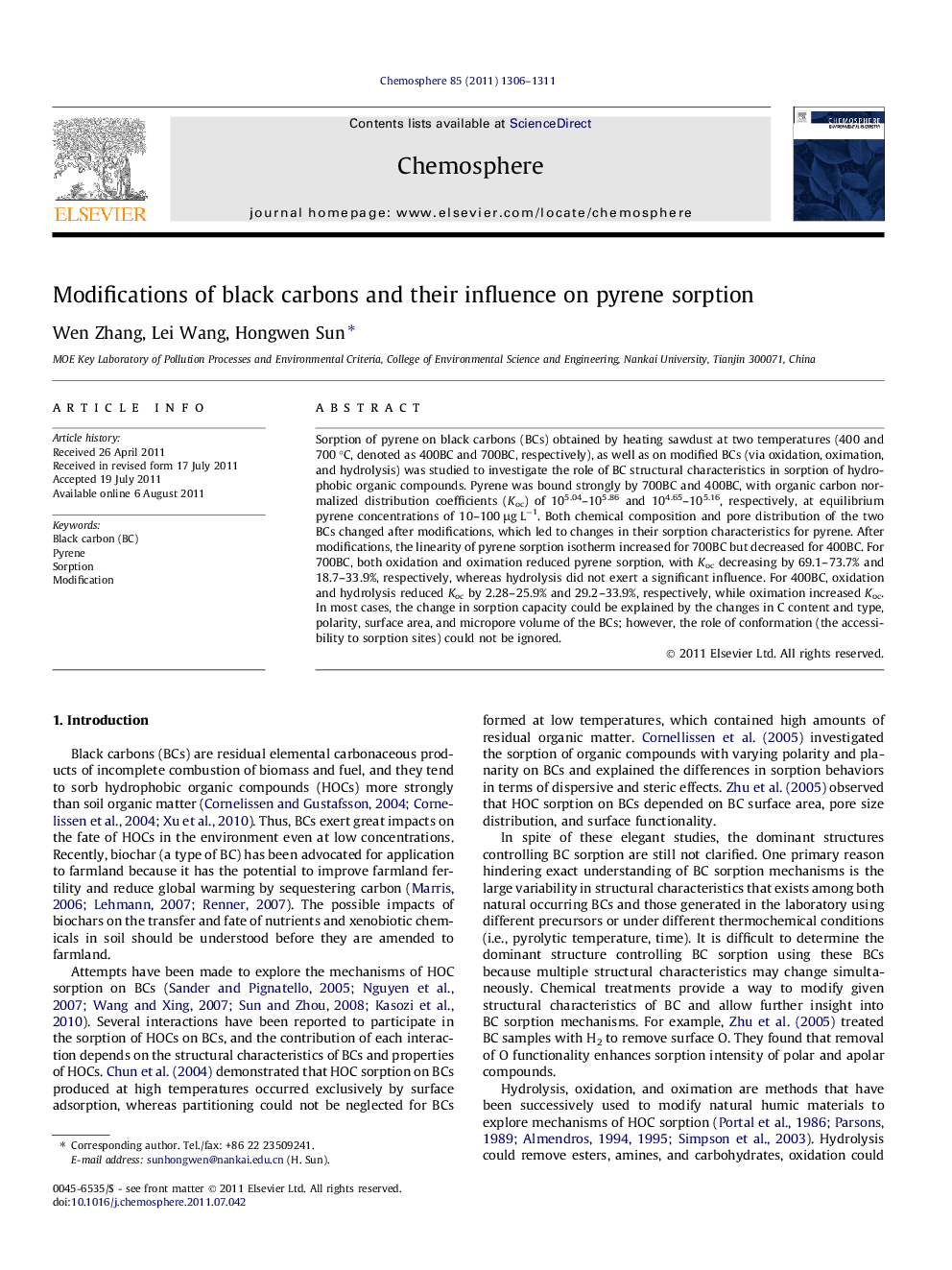| Article ID | Journal | Published Year | Pages | File Type |
|---|---|---|---|---|
| 4410120 | Chemosphere | 2011 | 6 Pages |
Sorption of pyrene on black carbons (BCs) obtained by heating sawdust at two temperatures (400 and 700 °C, denoted as 400BC and 700BC, respectively), as well as on modified BCs (via oxidation, oximation, and hydrolysis) was studied to investigate the role of BC structural characteristics in sorption of hydrophobic organic compounds. Pyrene was bound strongly by 700BC and 400BC, with organic carbon normalized distribution coefficients (Koc) of 105.04–105.86 and 104.65–105.16, respectively, at equilibrium pyrene concentrations of 10–100 μg L−1. Both chemical composition and pore distribution of the two BCs changed after modifications, which led to changes in their sorption characteristics for pyrene. After modifications, the linearity of pyrene sorption isotherm increased for 700BC but decreased for 400BC. For 700BC, both oxidation and oximation reduced pyrene sorption, with Koc decreasing by 69.1–73.7% and 18.7–33.9%, respectively, whereas hydrolysis did not exert a significant influence. For 400BC, oxidation and hydrolysis reduced Koc by 2.28–25.9% and 29.2–33.9%, respectively, while oximation increased Koc. In most cases, the change in sorption capacity could be explained by the changes in C content and type, polarity, surface area, and micropore volume of the BCs; however, the role of conformation (the accessibility to sorption sites) could not be ignored.
► Black carbons (BCs) were modified via oxidation, oximation, and hydrolysis. ► Both chemical composition and pore distribution of BCs changed after modifications. ► The role of structural characteristics of BCs in pyrene sorption was investigated.
